Lay concrete slab
How to lay a concrete slab for a braai area, patio, garden room or entertainment area.
Whether you are laying a slab for a braai, pathway or a patio, the process is the same. Here are the steps to get the job done.
DIY Tip:
To achieve the effect shown above, use a pointing tool to etch into the concrete. This is best done approximately 3-4 hours after laying. To prevent any damage to the surface of the still wet concrete, use a long plank of sufficient thickness to support you, and that extends the full width of the slab.
1. Build the form out of 20 x 50mm pine planks, nailed at the corners with wood nails.
2. Use a spade to slice the surface of grass into manageable squares. Set the form in place, shave away soil from high spots and check with a level. A slight slope of about 3mm per 30cm helps shed water.
3. Drive stakes around the perimeter to just below the top of the form. Fasten the stakes with wood screws.
4. Deliver your concrete mix to the form. Spread it around with a spade and press it against the sides. Then mix another batch. For instructions on the right mix ingredients, visit: www.cnci.org.za
5. When you have about half the form filled, use a pine plank to level the surface, but leave it slightly high.
6. Fill the other half of the form in the same way. A larger slab would require rebar or steel mesh to help control cracking, but our small slab can do without. Then, steadily scrape the plank from side to side while moving it along the form. If you find a low spot, fill it and scrape through that area again.
7. Finishing is all about timing – and surface water is the timer. Each pass with a tool brings up water and cement, but overworking the surface can weaken it. When the water from the previous pass is no longer visible, it’s okay to move to the next operation. After screeding, wait a few minutes before using the float. When the surface appears dull, hold the float on the concrete with extra pressure on the trailing edge.
8. Run the float along the pad edges and across the surface in wide arcs.
9. Use an edging tool to round the slab edges.
10. Troweling will give you a smoother surface, if desired. Again, wait for the surface water to disappear. Trowel the edges first, then sweep the surface in wide arcs. If you can’t avoid sweep lines, wait 15 minutes and trowel again.
11. Keep the job damp for five days by covering it evenly with a sheet of plastic or by using a sprinkler.
DIY Tip:
Wet concrete is strongly alkaline and can start a chemical burn if it contacts bare skin. Wear long-sleeve shirts, long pants and gloves when working with concrete, and don rubber boots when you have to walk in it. And, don’t forget goggles to shield the eyes from airborne cement dust.

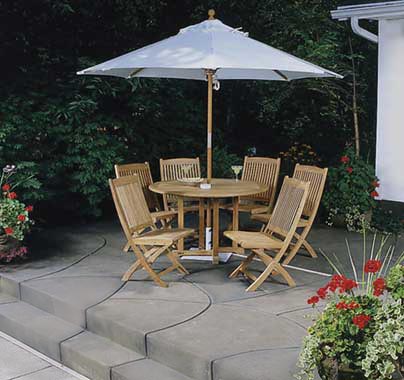

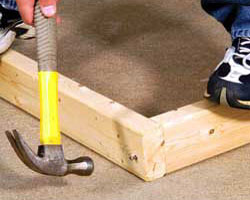
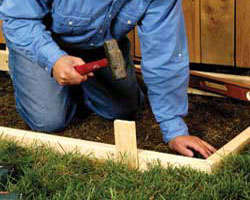
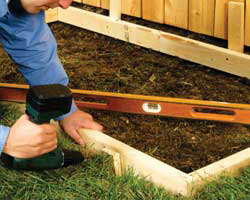
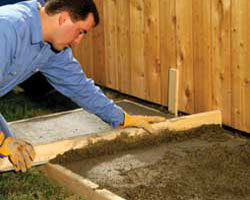
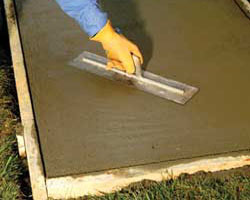
Comments
Add comment